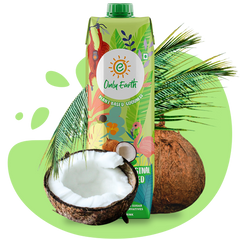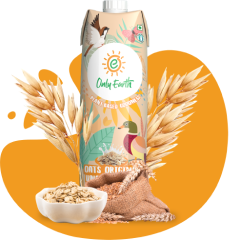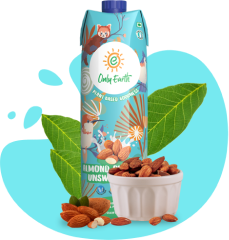In recent years, the landscape of dietary choices in India has evolved, with many people exploring alternatives to traditional dairy products. Among these alternatives, vegan milk has garnered significant attention. This blog aims to provide a comparative analysis of the nutritional aspects of vegan milk versus regular milk, considering the dietary habits and preferences of the Indian audience.

Traditional Choice: Regular Milk
Dairy milk has long been a cornerstone of the Indian diet. It's a key ingredient in various traditional dishes, beverages, and desserts. Regular milk boasts a robust nutritional profile:
- Protein: Dairy milk is a rich source of high-quality protein, essential for muscle repair and growth.
- Calcium: Critical for bone and teeth health, dairy milk is naturally fortified with calcium, supporting nerve function and blood clotting.
- Vitamins: It contains essential vitamins such as B12 and D, which are vital for maintaining energy levels and bone health.
- Fats: Whole milk contains saturated fats, but low-fat and skim options are also available to cater to different dietary needs.
Despite these benefits, dairy milk is not suitable for everyone. Lactose intolerance is quite prevalent among Indians, causing digestive discomfort. Additionally, growing ethical and environmental concerns are prompting many to seek plant-based alternatives.
Emerging Choice: Vegan Milk
Vegan milk, derived from plant sources, offers a dairy-free alternative that is gaining popularity, especially in urban areas. Let’s explore some common types of vegan milk and their nutritional benefits:
- Almond Milk: Low in calories and rich in vitamin E, beneficial for skin health. It contains less protein compared to dairy milk.
- Soy Milk: Similar to dairy milk in protein content, soy milk is also a good source of potassium and can be fortified with additional vitamins and minerals.
- Oat Milk: Contains beta-glucans that support heart health and is rich in fiber, though relatively higher in calories.
- Coconut Milk: Known for its creamy texture and rich medium-chain triglycerides (MCTs) that boost energy, it is lower in protein and higher in fat. However, UHT coconut milk, like Only Earth’s, is typically lower in fat while still providing a creamy texture and essential nutrients.
Nutritional Comparison
- Protein Content: Regular milk typically has more protein than most vegan milks, except soy milk, which is comparable.
- Calcium and Vitamins: Both regular and vegan milks can be fortified with essential nutrients. However, natural sources of vitamin B12 are found in dairy, making supplementation necessary for vegans.
- Fat Content: Regular milk contains saturated fats, while vegan milks generally have healthier unsaturated fats.
- Digestibility: Vegan milks are lactose-free, making them easier to digest for those with lactose intolerance.
- Health Benefits: Vegan milk contains no cholesterol and no trans fat, making it a heart-healthy option compared to regular milk.
- Calorie Content: Vegan milk is generally lower in calories compared to regular milk, which can be beneficial for those looking to manage their calorie intake.
Integrating Vegan Milk into Indian Diets
The versatility of the Indian diet allows for easy incorporation of vegan milk. Here are a few ideas:
- Masala Chai: Almond or oat milk can replace regular milk for a delicious, creamy chai.
- Smoothies: Blend soy milk with fruits and vegetables for a nutritious breakfast.
- Curries: Coconut milk is already a staple in many South Indian dishes, offering a rich, creamy base.
- Desserts: Prepare kheer or halwa using vegan milk for a healthier twist.
Conclusion
Both regular and vegan milks offer distinct nutritional benefits. Your choice should depend on your dietary needs, ethical beliefs, and personal preferences. Brands like Only Earth provide a variety of fortified vegan milks, making the transition smoother and ensuring you do not compromise on nutrition or taste.
Understanding the nutritional aspects of these milks helps in making informed dietary choices that suit your lifestyle and health goals. Embrace the diversity of options available and enjoy exploring new flavors and health benefits.





